Exploring the Anglo
Dan Worrall
Contributions to the Concertina Library by
Dan Worrall.
-
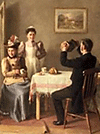 Notes on the Beginnings of Concertina Playing in Ireland, 1834–1930
Notes on the Beginnings of Concertina Playing in Ireland, 1834–1930
-
by Dan Worrall
-
Although the Irish are known for their long folk memory, the story of how of concertina
playing began there has been largely lost; it is often tagged to a threadbare tale of
mariners bringing them up the Shannon estuary to Clare. This paper reconstructs its history
by using period accounts from newspapers, books and family histories to document the social
gatherings where it was played, and the vendors who sold it. The Anglo-German concertina was
enormously popular all across Ireland during its heyday, amongst people of nearly all social and
economic groups.
The concertina is a much-favored instrument in County Clare, Ireland, and
a few players there bridge the gap in time between the instrument’s heyday in the
late nineteenth/early twentieth century and the current revival, which began in the 1970s.
Its later concentration in Clare was not a result of how it arrived, but
of local cultural and economic factors that aided its barest survival there while it was
completely dropped—and all but forgotten—elsewhere in the country.
-
Posted 15 November 2007
- » read full article
-
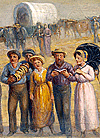 A Brief History of the Anglo Concertina in the United States
A Brief History of the Anglo Concertina in the United States
-
by Dan Worrall
-
In the United States the Anglo-German concertina was very popular during the middle and late
nineteenth century, but by the early twentieth century it had all but vanished from American popular
culture, becoming only a Hollywood symbol of “the old days”.
After the revival of interest in traditional music and in concertinas from the 1960s the Anglo has
once again had some popularity in the United States, but without connection to any tradition of its
earlier widespread use in America. This paper attempts to reconstruct a basic history
of the Anglo concertina in the U.S. by using nineteenth-century tutors, newspaper mentions,
anecdotes from family histories, and archival photographs.
Topics discussed include the early use of German concertinas in the Eastern U.S.,
the use of Anglo concertinas by Mormon and other western pioneers, use during the War Between the States,
use by African-Americans, use in nautical contexts, use by immigrant and other ethnic groups, and
use by the American branch of the Salvation Army. Some previously unpublished photographs are included.
-
Posted 15 April 2007
- » read full article
-
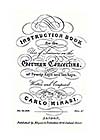 Earliest Known English-Language German Concertina Tutor: Minasi’s “Instruction Book” 1846
Earliest Known English-Language German Concertina Tutor: Minasi’s “Instruction Book” 1846
- by Randall C. Merris and Dan Worrall
-
Carlo Minasi published the earliest known English-language tutor for the German ("Anglo-German") concertina
by 1846 in London.
This publication goes well beyond the basics; in it are instructions not only
for the simple “along the row” melody line style, but also extensive discussions of octave
playing, cross row fingering, and chord accompaniment.
Numerous fully arranged musical selections are included,
almost all in the “English” or “harmonic” style, where chords are played on the
left and melody on the right, more or less as a duet concertina is played.
- Posted 15 August 2005
- » read full article
-
 Earliest Known German Concertina Tutor: Höselbarth’s “Anweisung das Accordion zu spielen”
Earliest Known German Concertina Tutor: Höselbarth’s “Anweisung das Accordion zu spielen”
-
by Stephen Chambers and Dan Worrall
-
Johann Gottlieb Höselbarth published the earliest-known tutor for the German concertina in Chemnitz Germany, in the late 1830s
or early 1840s.
All of the music in this tutor is in the key of C, and several of the tunes in the Appendix
include modulation between the keys of C and G. Chords are typically rich, with up to four notes played at once on the left hand.
All of the tunes are in the so-called harmonic style, where the melody is played on the
right hand, and the chorded accompaniment is played (mostly) on the left. This and an
early tutor of 1846 published in London by Carlos Minasi (see elsewhere on this site)
indicate that the harmonic style of playing dates back to the earliest days of the German
concertina.
-
Posted 15 August 2005
- » read full article
-
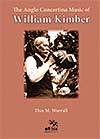 The Anglo Concertina Music of William Kimber
The Anglo Concertina Music of William Kimber
- by Dan Worrall
-
This is the first thorough examination of the playing style and repertoire of
William Kimber (1872–1961). Kimber played the Anglo in the "harmonic"
or "English" style (melody on the right hand and chords on the left), a style which
goes back at least to the earliest history of the Anglo concertina in England, is standard for the
Morris dance tradition, and is typical of many leading contemporary players.
Despite its importance the harmonic style of playing has not been accessible in recent tutors.
But thanks to the fact that Kimber was the earliest player of the Anglo
to be extensively recorded, his style can be studied here through the
extensive annotated transcriptions of Kimber’s playing presented for the first time.
Published by the English Folk Dance and Song Society,
October 2005. ISBN 085418194146, 96pp with b&w illustrations, forward by Roger Digby. Available at the
EFDSS online shop,
and at The Button Box.
- Posted 15 June 2005
-
» go to website
Do you know another resource that we should include?
Tell us about it.
Reprinted from the Concertina Library
http://www.concertina.com
© Copyright 2000– by Dan Worrall
|
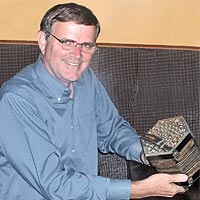
Dan Worrall, holding
William Kimber’s Jeffries Anglo
concertina (with thanks to
Julie Kimber-Nickelson).
|






